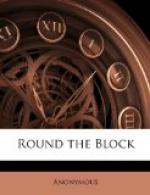This they did as soon as they could, reserving all discussion of the painful event of the evening for the free air of the street.
As Overtop, very serious, and Maltboy, very jovial, were about to descend the steps to the sidewalk, they were met by a messenger, who desired them to go with him immediately to the station house to see some friends (names forgotten) who had been arrested, and had sent for them.
Thither they went, and experienced the greatest surprise of the evening.
BOOK NINTH.
THE INQUEST.
CHAPTER I.
Coroner and Jury.
The post-mortem examination had been held; and three doctors had sworn that deceased came to his death from a great variety of Greek and Latin troubles, all caused by a learned something which signified, in plain English, a blow on the head. Coroner Bullfast was so struck with the clear and explicit nature of the medical evidence, that he had it reduced to writing for his private regalement.
The post-mortem examination, and the testimony of the three doctors, and of all the people in the house (except Patty Minford, daughter of the deceased)—whose joint knowledge upon the subject amounted to nothing more than hearing somebody with heavy boots come down stairs about midnight—occupied the whole of the first day. Patty, or Pet, was so thoroughly unnerved by the events of that horrible night, that the coroner found it impossible to take her evidence on that day. She had fainted twice before she could make Coroner Bullfast clearly understand that Marcus Wilkeson, her benefactor, and her father’s best friend, was THE MURDERER. Having learned thus much, the coroner had put the police on the track of Marcus Wilkeson, and had postponed the further examination of the chief witness.
Mrs. Crull, on learning of the tragic affair, had gone in person to the house of death, and taken Patty to her own home.
The remains of the unfortunate inventor had been removed to the nearest undertaker’s for interment, at the expense of Mrs. Crull. The apartments had been diligently searched, and the personal effects of the deceased examined, under the direction of the coroner. A number of documents had been discovered, which, in the coroner’s opinion, threw a flood of light on the motives that led to the crime. A few dollars and a bull’s-eye silver watch, found on the dead body, precluded the idea that the murder was done for plunder. With that quickness of perception for which Coroner Bullfast, like most of his official kind, was celebrated, he had formed his theory of the murder, and tremendously strong must be the future testimony that could shake it.
On the morning of the second day, Coroner Bullfast and the jury reassembled, about ten o’clock, in the room where the murder was committed.




